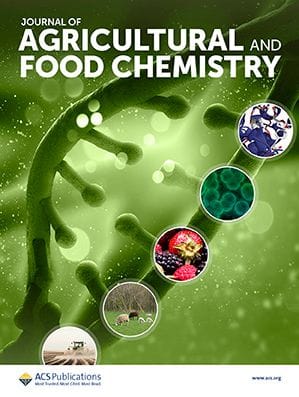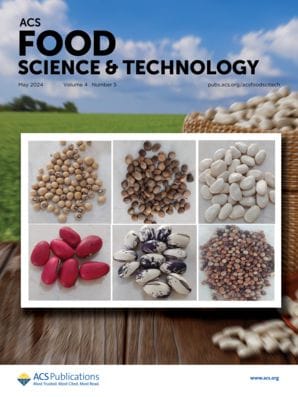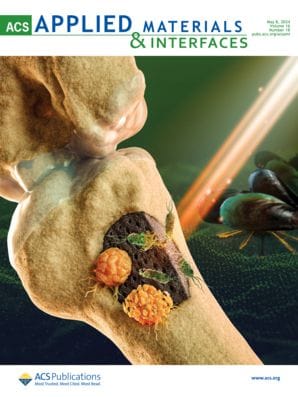Feast your eyes on some of the latest breakthroughs in food science, revealing surprising insights into chocolate, blueberry wine, plant-based meats, and novel applications of chicken fat.

The world of food science is continuously evolving, bringing new insights and innovations to our plates. Here, we explore four recent studies published in ACS journals that have made significant strides in better understanding the chemistry behind some of our favorite foods and beverages. From the unexpected formation of potentially harmful compounds in chocolate to the innovative use of chicken fat in energy storage devices, these discoveries underscore the multidisciplinary nature and far-reaching impact of food chemistry.
Understanding the risks in chocolatey sweet treats
A new study published in Journal of Agricultural and Food Chemistry reports on the complex chemistry of chocolate production, focusing on α,β-unsaturated carbonyls. These compounds, known for their potential genotoxicity, were found to form during the roasting of cocoa beans and increase significantly during the chocolate-making process. Surprisingly, similar compounds were detected in various commercial sweet snacks, although at lower levels. The study provides crucial insights but reassures that current concentrations do not pose significant health risks compared to established maximum use levels. However, higher levels of genotoxic furan-2(5H)-one in crepes and cakes warrant further investigation.

Occurrence and Synthesis Pathways of (Suspected) Genotoxic α,β-Unsaturated Carbonyls in Chocolate and Other Commercial Sweet Snacks
DOI: 10.1021/acs.jafc.4c01043
Perfecting blueberry wine: the role of temperature and time
In the quest to perfect blueberry wine, researchers have identified the crucial roles of temperature and fermentation time. The study found that higher fermentation temperatures not only reduced the fermentation time but also affected the concentration of beneficial bioactive compounds. Notably, wines with shorter fermentation times and higher temperatures exhibited a richer red and brown hue and higher antioxidant activity. These findings, reported in ACS Food Science & Technology, emphasize the delicate balance needed in winemaking to maximize the health benefits and aesthetic qualities of blueberry wine.

Exploring the Impact of Temperature and Fermentation Time on the Evolution of Bioactive Compounds, Antioxidant Activity, and Color Evolution in Blueberry Wines
DOI: 10.1021/acsfoodscitech.4c00271
Turning waste into wealth: chicken fat oil for energy storage
In an innovative study published in ACS Applied Materials & Interfaces, scientists have developed a method to transform waste chicken fat oil into carbon nano-onions (CNOs), which are critical for energy storage applications. Using an oil-wick flame pyrolysis approach, the team synthesized multilayered graphitic CNOs, enhancing their ion movement and electron transport properties. The heteroatom-doped CNOs demonstrated impressive capacitance and stability, outperforming undoped variants. This groundbreaking method provides a cost-effective and environmentally friendly solution for energy storage, and it also opens potential doors for utilizing biowaste in high-tech applications.

Strategic Way of Synthesizing Heteroatom-Doped Carbon Nano-onions Using Waste Chicken Fat Oil for Energy Storage Devices
DOI: 10.1021/acsami.4c02753
Evaluating Protein Quality in Plant-Based Meat Alternatives
As plant-based meat alternatives gain popularity, researchers have scrutinized their nutritional profiles. A recent study in Journal of Agricultural and Food Chemistry compared plant-based steak and cured meat analogues with their animal-based counterparts, revealing lower protein content in the former. While the amino acid profile of plant-based products was generally good, some did not meet the essential amino acid requirements for children. Interestingly, the digestibility of proteins varied, being lower in plant-based steaks but higher in plant-based cured meats compared to animal-based products. This research emphasizes the importance of ingredient quality and processing techniques in creating nutritionally adequate meat alternatives.

Assessment of Protein Quality and Digestibility in Plant-Based Meat Analogues
DOI: 10.1021/acs.jafc.3c08956